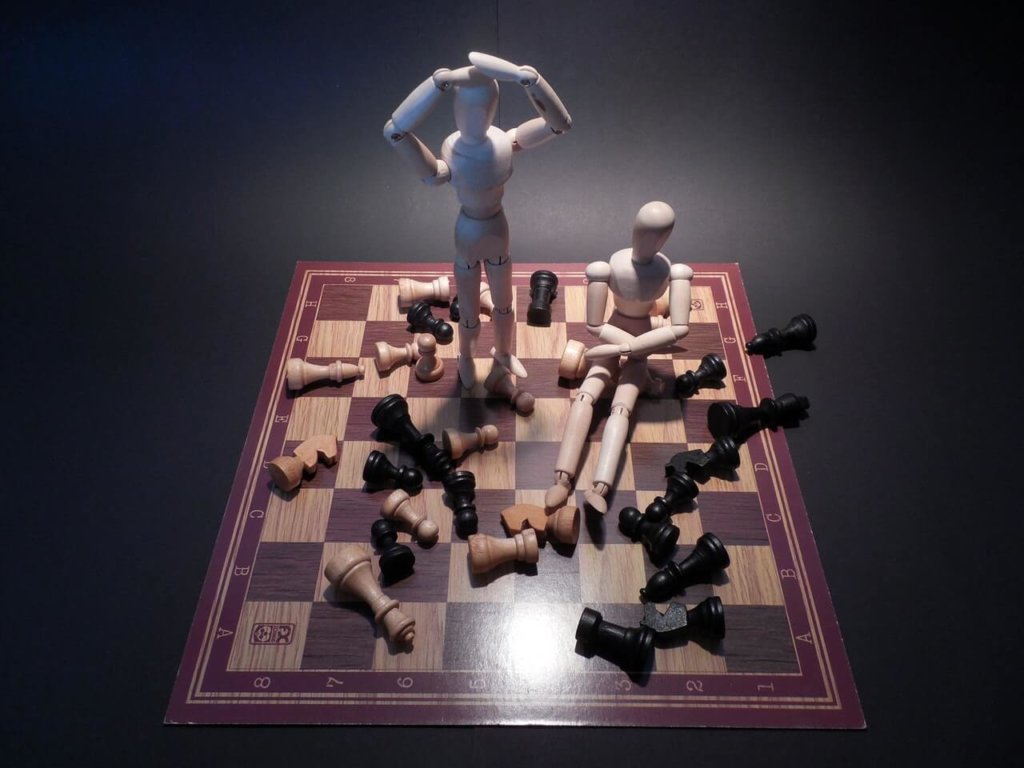Image source: Pixabay via Pexels
When I was first starting off, a successful and seasoned entrepreneur told me something that ended up being true (more than I would like to admit, I suppose) for my first legitimate attempt at developing a product, as well as for every business venture I have done since. He told me “It’s not about making a product right the first time, but instead initially figuring out everything that can go wrong, doing this quickly and early on, and adjusting accordingly.”
This can leave one with a rather discouraged feeling, even if the excitement of developing a new product has prevented any concrete attempt at exploring for flaws. In the world of product development, business endeavors entail sacrificing time, money, and effort. It means discouragement and disappointment in the lack of apparent progress, which can often lead to a sense of failure in oneself. More times than not, I have seen confident and energetic entrepreneurs trade in their dreams for a nine- to-five, because of the level of personal taxation and lack of momentum in the beginning stages of their startup attempts.
In a society that bases a lot of individual self-worth on careers, people don’t typically handle encountering failure after failure incredibly well while attempting to transcend the safeness and practicality of a stable job in pursuit of more intimidating dreams and goals. That is simply not a normal human reaction. However, let us explore the understated advantages of accepting and learning from the all-hell-breaks-loose business hang-ups early on.
Facing the immense task of exploring what is wrong with your product development strategy early on, even if this means swallowing your pride that you may not have gotten everything right the first time, is powerful not only to your product’s success, but towards your growth as an entrepreneur. Doing this preferably sooner than later determines how relatively unscathed you will come out on top later with your finances and self-respect. As one who has helped dozens of companies prototype their ideas and move through the stages of product production, I believe certain strategies and precautions can be enacted – regardless of what your product is – to prevent, or at the very least reduce the likelihood of business failure later on.
Since it is such a necessary staple for keeping a business going, I would like to first touch upon the financial weight of practical planning and strategic execution of a product.
Here are some obstacles that can occur at various stages of product development, but will not be easy to financially salvage if not identified early on:
-
- Creating a product design containing ill-fitting dimensions that will cause product performance to fail later.
- Selecting a sub-optimal or expensive manufacturing process that will eat away at your profit margins and weaken product output.
- Not devoting enough time to the brand development and brand recognition of your product.
These are only several of the numerous factors that can set one back in the beginning of developing and launching a product, and it is indisputable that these blunders will increase losses exponentially when the business is farther along in more mature phases of product development and production. It is in the later stages that a business is unable to pivot as effectively.
Here are some steps that can be taken to catch prototyping issues early on, and lessen their possible negative impacts:
- Strategic planning – consider the immediate and long-term effects of a business decision, and asking yourself whether you are focusing more on investing in present or future payback. What are the pros and cons of these financial decisions for your business presently versus where you want your business to be in the future, and how have you made strides to facilitate strategies for both?
- Talking to industry experts – find experts in your field, or at least individuals that have successfully started a company that produces tangible products before, and pick their brains on the things you can improve on with your own company. They will likely be able to help you identify issues they themselves had to experience early on, and how they would have done it differently.
- Knowing your market – talk to people other than friends and family about whether they would want to buy and use your product is of the upmost importance (I REALLY can’t emphasize this enough). Your friends and family will often be overly optimistic and not want to hurt your feelings about your idea. The best way to figure out what your target market actually wants and is willing to pay money for your product is the key to your product’s success. This is why it is crucial to identify who exactly your target market is, and whether your product is what they want, or if simple changes can make your product more desirable to your intended audience. It is crucial to identify what changes can be made, and make them early on to guarantee greater product success.
- Exploring your options – there is no absolutely right way of making a product, but there are more optimal ways than others. Again, determining this can come from speaking to industry leaders, requesting quotes from an array of suppliers and manufacturers, or exploring various processes that may fit how you want to make your product. It can’t help seeing what options are out there and it gives you a chance to further educate yourself on the industry you plan on participating in.
Time, which inadvertently links to effort, is another key component to launching a business. In the initial stages of development, I believe that the amount of time and effort put into a startup early on by the key players is a much more predictive factor of whether a product will successfully launch than financial backing can ever foreshadow. It is easier (and less detrimental) to fail often in the beginning, which is why the early stages are where the most time should be put in.
In the early stages, becoming discouraged and burned out is a very real and common risk, especially in early business ventures that possess steeper learning curves. With prototyping, issues that are encountered amongst various products seem to have a stark difference at surface level, but the formula leading towards resolution usually has similar steps. As in everything, repeatability is the key to success, and the more times issues are faced the easier they become to solve.
I have found that looking for patterns in the reasons behind failures, as well as which strategies work best to resolve these issues, is key to more swiftly and agilely solving the bigger issues that may surface down the road. Failures and obstacles that occur later in a business development phase will most likely take greater time and effort all around to resolve, so having the skill set and tools to meet these issues is imperative.
Effort, which can be sometimes confused with the amount of time put in, is also imperative to a product’s success. While one can commit ample time to a task, doing this in a purposeful and thought-out manner is what really makes the difference regarding the result (I would like to also add that this directly reduces the amount of time required to be spent on a task). This means self-awareness, situational awareness, and carrying out actions backed by intention in everything you do regarding making business decisions.
The very essence of prototyping consists of trial and error, one can almost guarantee that something will not go right the first time. It’s safe to say that discovering these hang-ups early on, when a business is more lean and agile, is directly linked with ease of correctability. The other issue then, is the level at which one allows business blunders to affect them, and keeping a “better to discover this issue now, than later” attitude to help put failure into perspective.
No matter how amazing, world-changing, or unique your product idea may be, every entrepreneur should be prepared for setbacks – both major and minor, early on during the prototyping phase of a product. Though failure will be inevitable, practicing mindfulness, strategic planning, and recognizing “failure” for what it really is – just a push in the right direction, can help one to get through the challenges of transitioning an idea into a product, and a product into a business.

